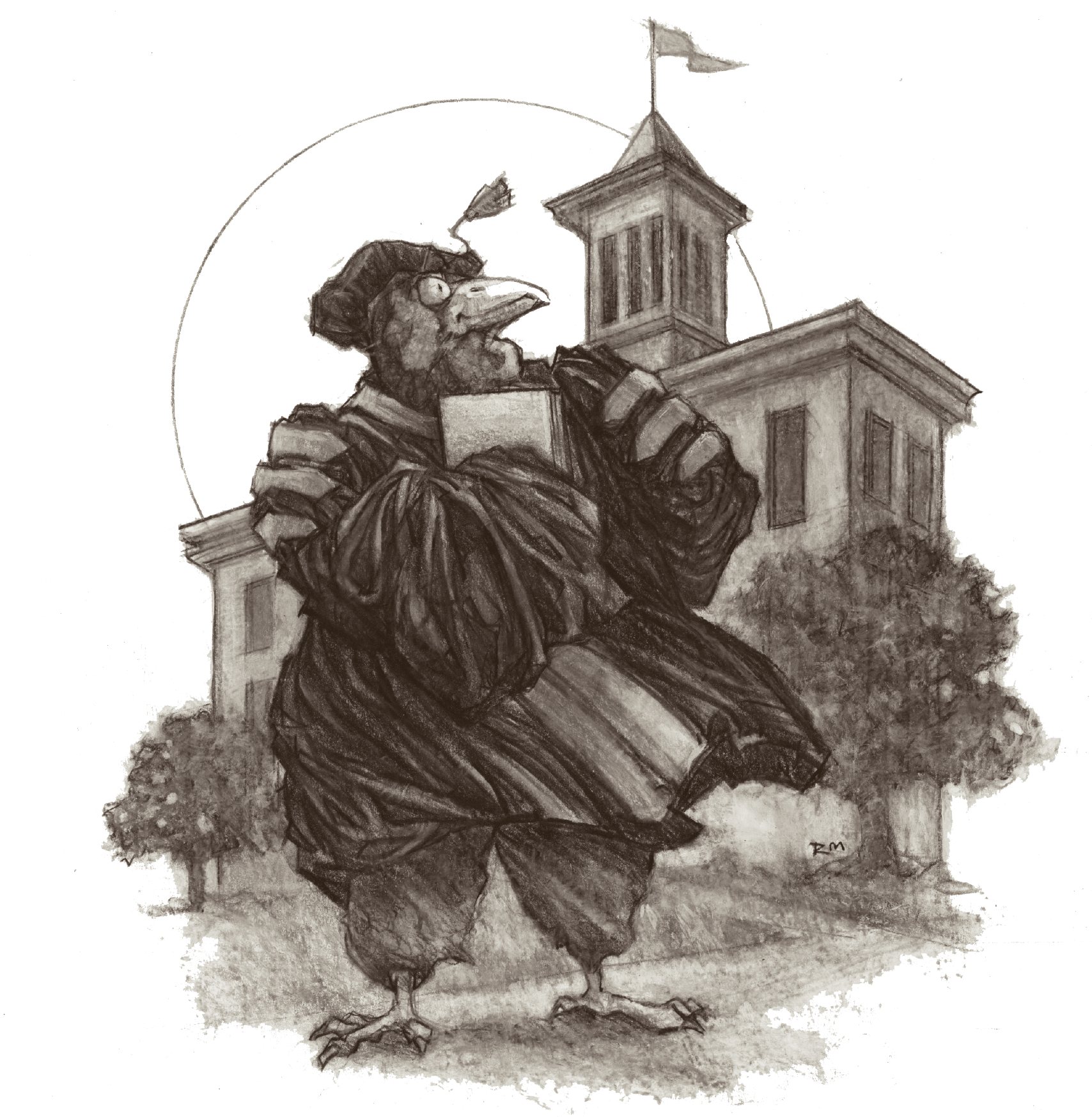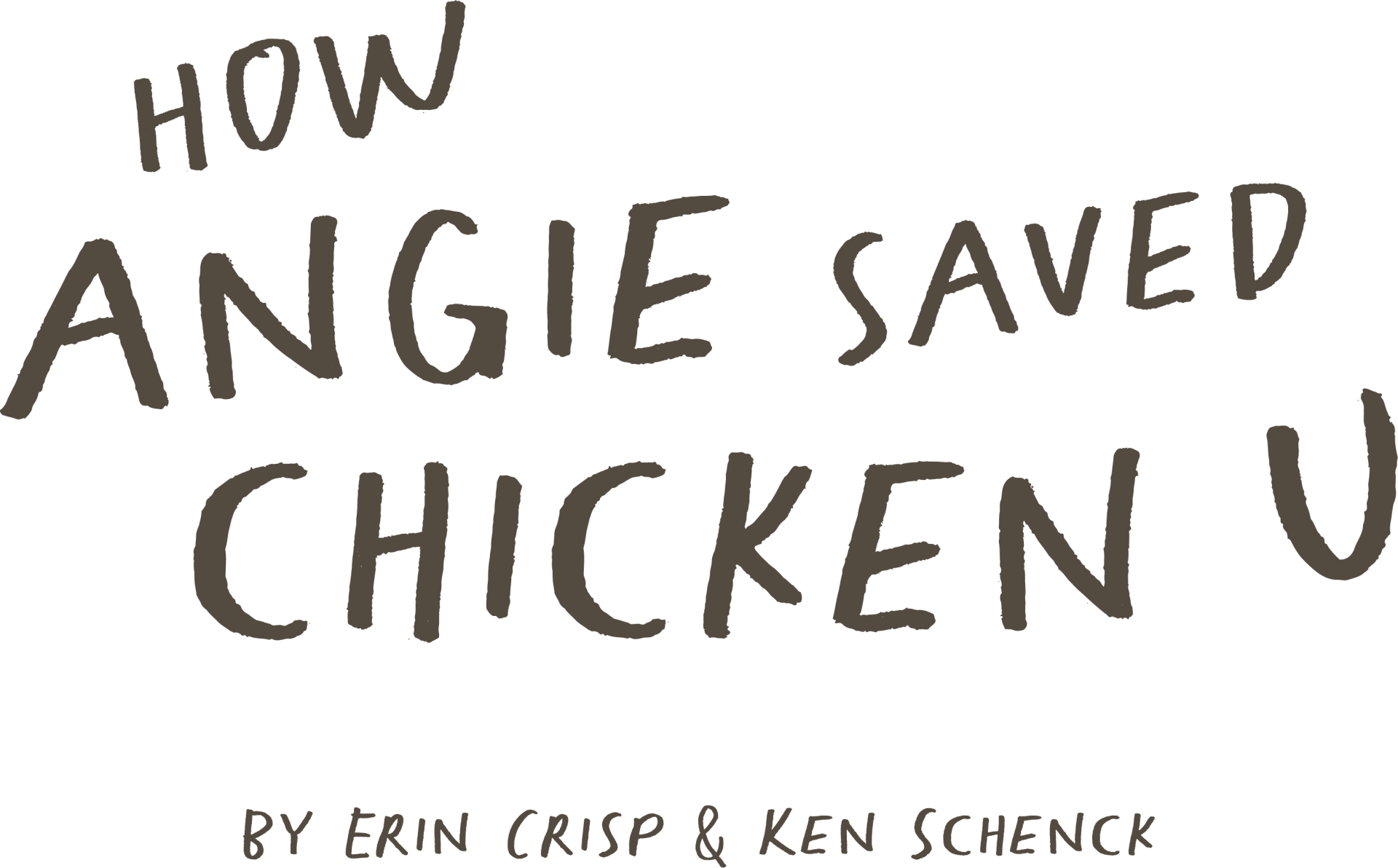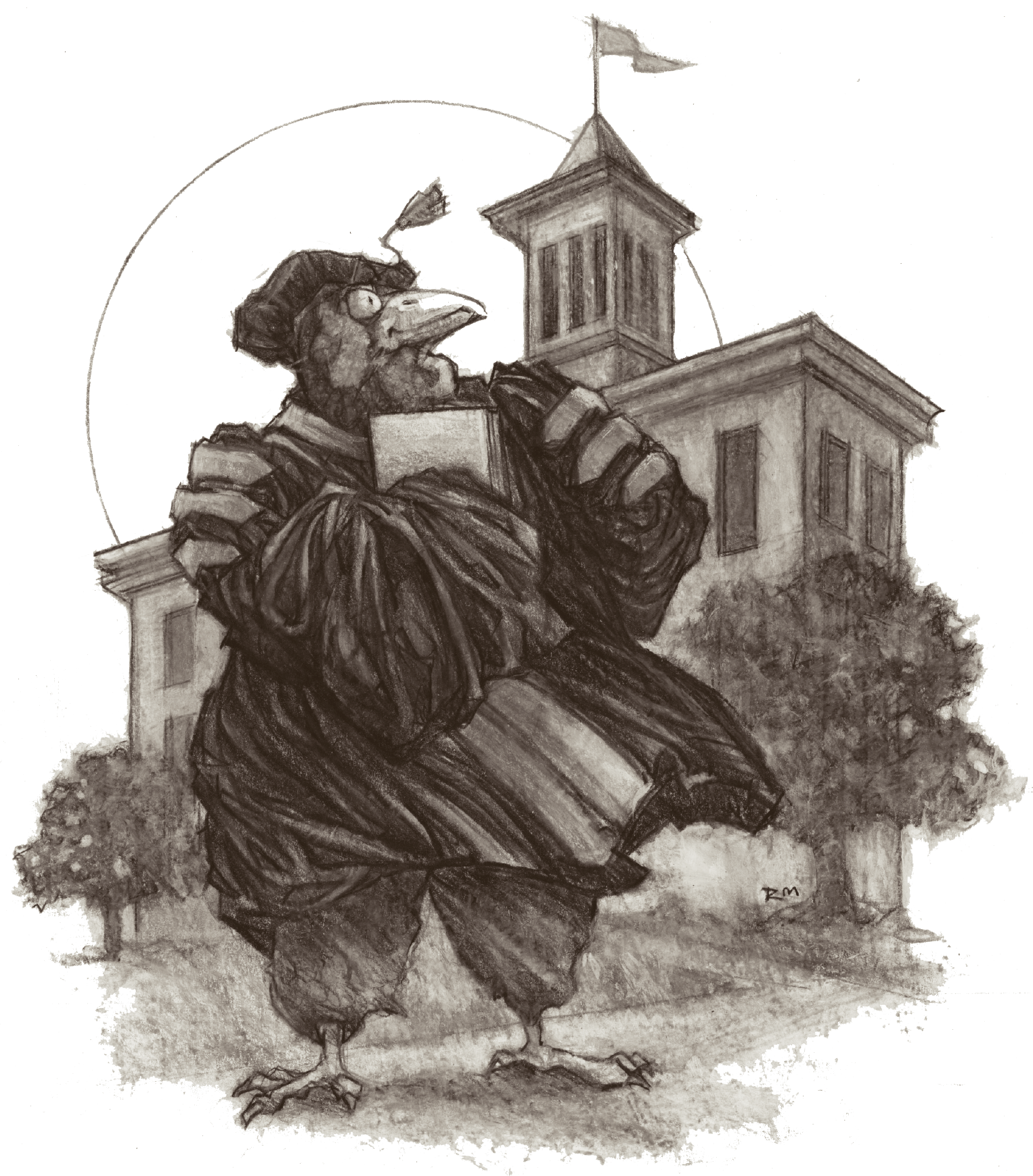
Erin Crisp, Ed.d.
Chief Academic Officer

Dr. Ken Schenck
VP of University Partnership
How Angie Saved Chicken U is a fable about the unprecedented challenges currently facing the academy and a possible path forward. The entrepreneur Benny creates Owl Island, a platform on which multiple schools in the same situation can economize and expand their markets. With the support of her own team, Angie collaborates with other chicken schools to a sustainable future. While Chicken U is a composite of several colleges, Owl Island represents Campus Edu, which was founded by Darren Campbell (Benny) in early 2020.
Chapter 1

President Angie stared at the new enrollment numbers for the fall at Chicken U. Down another hundred from last year. For over ten years, Chicken U had experienced a steady decline, but this year was the worst of them all. Only 550 chickens had come to the farm this fall, and only 50 chickens were taking classes in the Owl Line programs.
Last year, the bird flu forced them to send all the chickens home in the middle of the semester. And while a gift from the humans in Big City had kept their doors open, Angie knew that they would not survive for long unless they found something to turn the college around. She couldn’t sit still, so she decided to take a quick stroll around the farm campus. Several classes were in session in the Gen Ed Barn. Dr. Sissa was teaching Bird Brains, a chicken psychology class. Dr. Luna was teaching The Chicken Manual, a course central to the mission of the college.
Angie could see that the classes weren’t even half full. There were twelve chickens in Manual and only six in Bird Brains. Six wasn’t even enough to pay Dr. Luna’s salary.
The Science Barn had needed an upgrade for years. Professor Tillie, a particularly creative hen, had blown part of the roof off in an unfortunate chemistry experiment three years ago. They had managed to patch it every year, but the barn really needed a new roof. The Chicken Finance Officer (CFO) had been saying for years that they needed to fund the depreciation of the barns and coops, but they just hadn’t had the money to do it.
Beyond the classroom barns were the student coops. Angie reminisced on the days fifteen years ago when they built a new coop almost annually because their enrollment kept growing. But those days were gone. Now half of the student coops were empty, and they had crammed the currently enrolled chickens into as few as possible to save on staffing and heating in the winter.
Of course, the less desirable the coop conditions were, the more prospective chickens chose to attend colleges with more comfortable coops. It was a vicious cycle. Cuts saved money in the short term but then cost money if any students were lost as a result in the long term.
At the edge of the property was the Owl Line program. Housed in what had been a collection of chicken faculty offices, Angie usually encountered a handful of exhausted looking owls when she visited the property. Junior owls were often sitting at cubicles, talking on the phone with students, solving technical issues, and creating new courses with senior owls via the Internet.
It was a part of the campus that many chicken faculty never visited, and some preferred to forget even existed. Some chicken faculty even had doubts about the quality of the Owl Line program.
The Owl Line building was bigger than a coop but not quite big enough to be called a barn. Angie stepped inside.
“Hello, Dr. Fitz,” Angie said, startling the old owl. Once upon a time he had been a business professor to the farm chickens, but in one wave of cuts he managed to keep his job by moving to the Owl Line.
“You scared me,” he said. It looked like he had been dozing on his perch. “I was just taking a quick nap before I fly off to Small City for an evening class.” In addition to classes at a distance, Owl Line also managed to hold classes at other physical locations.
These last couple of years, the CFO was happy if the Owl Line just broke even. For years, farm experts had said that the Owl Line was the way to grow a school, but it hadn’t really worked at Chicken U. The market was saturated. Everyone was doing it. And besides, most Owl Line customers lived within a few miles of some kind of college farm or another. Chicken U was in the country, with only one small city nearby.
“Where are all the other owls?” President Angie asked the three dozing at their desks.
“Well, every year we use more and more adjunct chickens. They don’t ever come here to the farm. They just fly from wherever they happen to live. The few of us who remain are exhausted. I’m actually teaching six distance classes this fall, some at Small City and some through Owl Line.”
“How is the chicken count looking for next semester?” Angie inquired, preparing herself for the usual hopeful yet disappointing response. She tried to provide some encouragement to the worried looking owls and headed back toward her office.
“Where can we get more chickens?” she kept thinking to herself. Owl Line was supposed to be the answer to save their bacon at the farm. What if it fails? Is there some new program they could start? Could they find chickens in Big City who would be interested in their Owl Line? How could they gain recognition when farms like Chicken U seemed to be less and less important to chickens? Should they try to reach other animals?

Sign up to our newsletter




